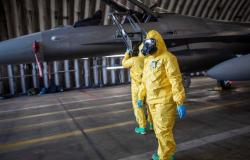The reality of space colors
Alyssa Pagan, a science visuals developer at the Space Telescope Science Institute (STScI), explains, “The quickest answer is, we don’t know,” highlighting the inherent limitations of human perception in observing the universe’s true colors. JWST operates in the infrared spectrum, capturing wavelengths beyond what the human eye can perceive, which challenges our conventional understanding of color in the cosmos.
As per a Space.com report, the JWST utilizes multiple filters to view its targets in various infrared wavelengths, which initially produces black and white images. These images are later colored by translating the data into the spectrum of visible light. “The longest wavelengths appear red, while the shorter wavelengths are blue or purple,” Pagan notes, bridging the gap between the unseen and the visible.
Enhancing scientific understanding
While the colors added to JWST images may not reflect the actual hues of celestial objects, they serve a vital role in making the data “scientifically digestible and also engaging,” according to Pagan. This process helps highlight specific features of interest and can guide scientists to new areas of research, such as the early universe’s distant objects revealed in JWST’s deep-field view, the Space.com report said.
A comparative view
Expand
By contrasting images from the JWST with those from visual-light telescopes like Hubble, we gain a unique perspective on familiar cosmic landmarks. For instance, the Pillars of Creation appear markedly different in infrared, revealing hidden star formation and showing portions of gas and dust as transparent, which are obscured in the visual spectrum.
Though we may not see the universe’s true colors with our eyes, the JWST’s images provide a profound understanding of the celestial wonders surrounding us, merging aesthetics with science to explore the depths of space.






